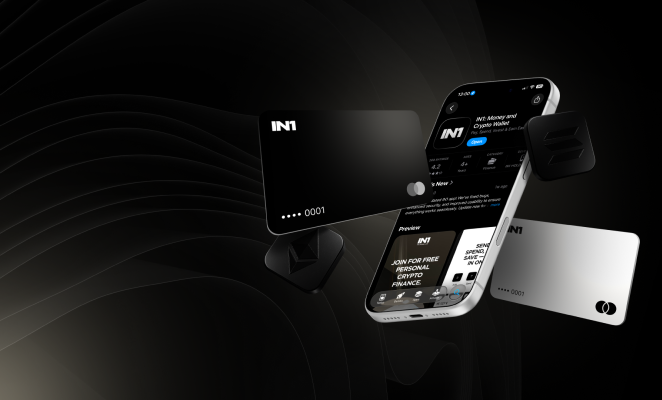.avif)

Royalty-free music service under NDA
SimilarWeb
Analytical panels
In-depth interviews
Royalty-free music service for streaming content creators.
In this case study, we uncover the approach to developing a strategy for entering the US market for an IT product, the Client’s name is under the NDA.
We’ve empirically implemented all the methods and steps described in the case study.
Determine what service features will make the IT product competitive and valuable to the end user.
Develop the strategy for market entry.
Low level of service uniqueness in the competitive US market.
Streaming is a relatively small market. To dive deeper, as well as to understand the market behavior of streamers and competitors, we conducted an in-depth study. This helped us identify how the Client could stand out from the competition, considering that its product's functionality is not unique.
Our findings made a substantial background for the Client’s market entry strategy: we developed a roadmap for the product’s launch and further promotion.
Based on the outcomes, we came up with a solution to rely on the ready-made playlists and easy navigation.
Since competitors did not use playlists as their competitive advantage, the Client could enter the market with a unique offer that would help it save on the promotion budget. The research revealed that inconvenient music searches distracted streamers most.
We outlined three areas of research:
The IT product category is quite specific while the potential of the target audience is narrow. For starters, we conducted several interviews with streamers. This helped us understand how the streaming market works and what should we emphasize in our research.
We found that a lion's share of the audience turns to royalty-free music websites from social media. This means that this channel can serve as a powerful means of promotion, while the engaged communities may turn into a genuinely loyal audience.
Royalty Free 一 a type of licensing that entitles buyers to use music in apps, podcasts, etc. after a one-time purchase and without the obligation to pay the owner royalties for reuse.
The question is whether any loyalty is possible to such services, or do users tend to change them over time? We utilized this hypothesis for further audience research.
The analysis of competitor services and communication helped us to understand the distribution of market forces, promotion strategies, target audience, and the content of products, including must-have and additional features.
Music as a product requires compliance with certain rules. Therefore, the following are tending in the niche communication:
Developing the right market positioning for the new brand, we studied the communication of its competitors:
Reason To Believe 一 reasons why a consumer should trust a brand or product, and the proof of benefits of purchasing a product.
While entering a highly competitive market, it is extremely important for a new service to find a free spot in the consumer perception. The mission is impossible without splitting competitors into communication vectors:
Given the results of the communication study, it became clear that all market players are actively communicating within these basic, but precious RTB channels.
At this stage, we systematized communication channels, influencers' involvement, community, media stakeholders and key messages of competitors.
Systematizing communication is a key step in finding a point of brand differentiation.
The results of competitor research helped us form the hypotheses to test on the audiences.
Identify and research the target audience, its habits, needs, and major motivators for using royalty-free music. Simultaneously, we explored barriers, drivers, and core criteria for choosing a particular royalty-free music service for their work purposes, i.e. streams, and YouTube videos.
We studied the audience of streamers and their user experience. We selected respondents based on three criteria:
One of the respondents was a person who managed the activities of 25 streamers. This way we generated data on streamers’ behavior as well as the most broadcasted music.
The research resulted in:

Along with the unformed habit of using streaming resources, we found the mainstream perception of royalty-free music as low-quality and generic. In most cases, an inappropriate perception is due to the negative user experience.
To dive deeper into consumer needs, we polled respondents about the ideal royalty-free music service.
This part of the research turned out the most effective as it helped us understand which features are of the greatest value to the audience and what are the user needs and pains still unmet by the available services on the market.
Where user needs are unmet, a new brand comes to create real value.
For starters, we segmented the audience by the level of readiness to use music services and selected relevant segments of the target audience.

Considering the trends of the target audience behavior, the Client should ground its unique sales proposal (USP) on the new opportunities users will benefit from while using its royalty-music service.

One of these needs is in delivering ready-made playlists and setting relevant infrastructure.
Service value for the target audience:
Based on the values and unmet needs of the target audience, we formed the positioning:
Awesome playlist for streamers with perfect search navigation.
Pursuing the Client’s positioning, we focused on service format: the tracks in playlists featured easy navigation so that users could find the right playlists on the Client’s site. We researched and developed features that would fit tracks into playlists. Our approach turned out to be far more effective compared to the standard grouping by genre.
The key point of Positioning is its implementation in brand communication.
Considering mainstream trends in gamification and personalization, we suggested adding a character who will communicate with users on the Brand’s behalf. This will help the Client build an emotional connection between the service and its target audience.
A supplementary role of the character is to find the perfect playlist in line with a user's request. This feature will eliminate one of the core hindrances - the lack of time and desire of streamers to search for tracks. Users may now specify their intent and the script will select the most relevant playlist.
One of our key tasks was to develop short and simple messages that would differ from those forwarded by established niche players. We developed three message options based on the key values of the service, existing hindrances, and core drivers.
It was also vital to present information from the perspective of user needs rather than the service functionality as such.
Pursuing a media strategy for the Brand's market entry, we identified three main directions of digital marketing:
1. Direct - shows how many users have purposefully visited the website. It allows clients to measure the level of brand awareness and loyalty. It is possible to work on improving this indicator by launching advertising aimed at boosting the Client’s brand awareness.
2. Social media - is an effective channel to promote the Client’s service while its target audience spends much of their time networking on these platforms.
3. Organic - considering specific features of the Client’s service as well as high competitiveness across the niche, search engine optimization of the website with a small number of pages will bring no effect. With that, we had not made a forecast for this channel in the media plan; still, SEO remains a cost-effective tool in the long run.
We strategically bet on YouTube, Facebook, and Instagram to promote the Client’s royalty-free music service. These are the right channels given the high presence of the Client’s target audience there, which increases the chances of smooth communication.
We also identified important tools to promote and engage a wider audience:
As a result of fruitful cooperation, the Client received a ready-to-implement strategy based on research of market players and the target audience.
The approach to market entry will serve the Client as a roadmap to outline the right direction and eliminate the unknown.
Case studies
Check out how we help companies like yours overcome challenges and rise to the next level.

Cost Per Action
Work period

.png)
Instagram followers
Facebook followers
Work period
